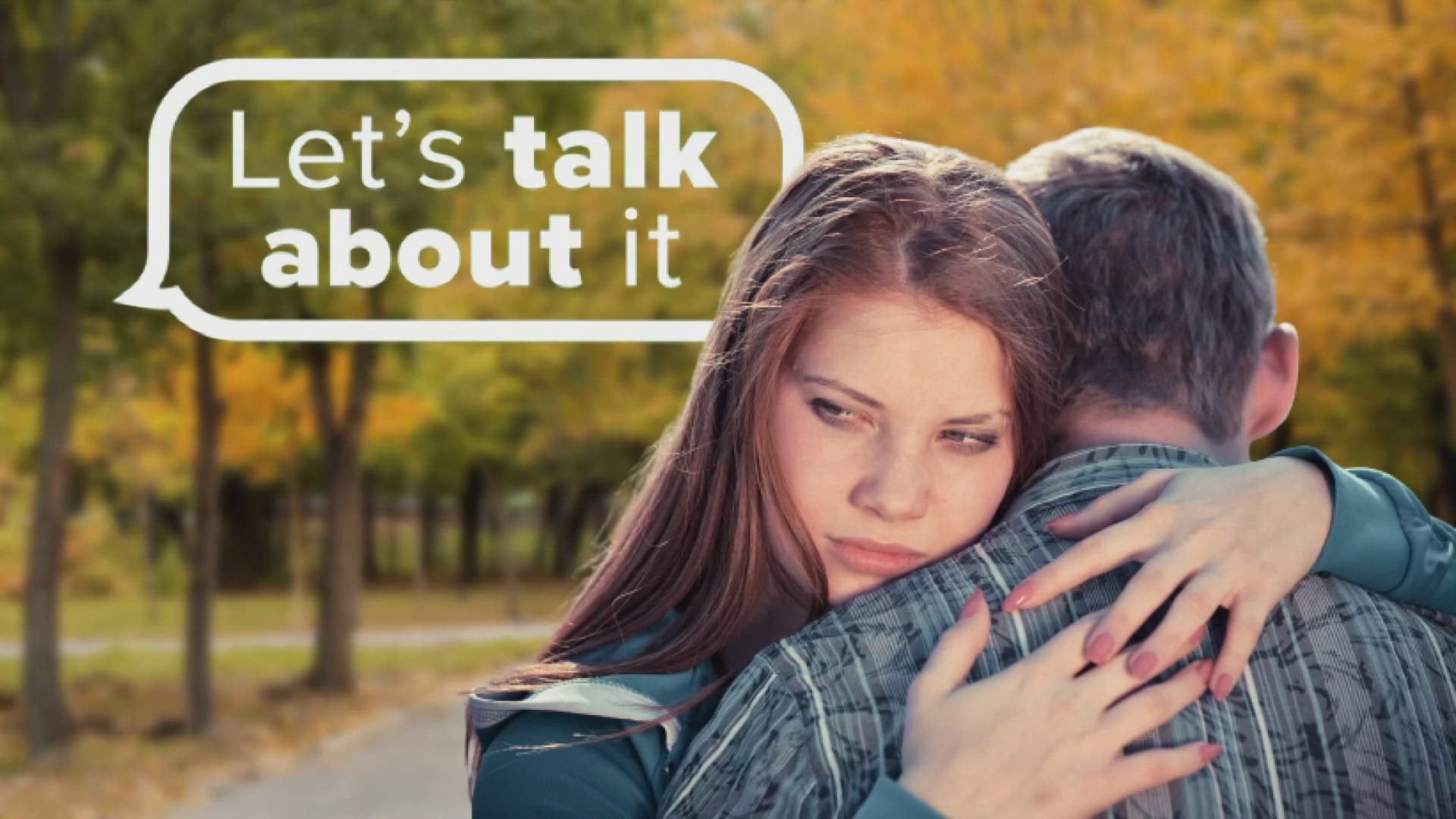TURNER, Maine — The older we get the better we get at knowing the difference between good and bad relationships. But for teenagers who are right at the start of the dating world, it’s all a big mystery.
As parents and guardians, how can you help your kids avoid bad or abusive relationships? For starters, lines of open communication need to start early, because as one high school health teacher explained, conversations about sex are happening between kids a lot earlier than you may realize.
"It really starts in middle school, sometimes sixth grade," Caroline Bochtler-Labrie told us.
She's the health teacher at Leavitt Area High School and says part of her lesson includes conversations about healthy relationships and boundaries.
"Setting those limits is important, because it’s very easy for kids to get excited about these relationships and just go all in too fast," Bochtler-Labrie said.
Bochtler-Labrie said she talks to her students about how to set limits or expectations, using the analogy of cliff jumping. She'll ask them to think about how high they're comfortable jumping from, and if their partner is at a higher level, that partner needs to respect your lower level. She talks to them about recognizing red flags and the inherent dangers of giving a partner too much, including private photos.
"Part of it is there such a pecking order to feel valid, to feel wanted, and get attention. Sometimes they’ll take the attention whether it’s good or bad because they just want the attention. They want to be seen," Bochtler-Labrie said.
But the dangers are real, and that’s important for your teen to know. She said it just takes a boyfriend showing that private photo to a friend, then who knows where the photo will travel.
"There are people who are looking for teens to use in sex trafficking so when those photos go out ... Again, they don’t know who actually got it, because there are websites that people upload these photos to," she said.
"We’ve had kids transfer here from other schools because, well, 'Everyone saw my photo at that school,' but really the photo probably made it here too," Bochtler-Labrie said.
Then there’s the very real trauma of teens being coerced or forced into sex, which is not only about girls, though girls are targeted far more often.
Before the COVID-19 pandemic high school students took the CDC's Youth Risk Behavior survey. In 2019, roughly 850,000 teen girls said they’d been raped. After the pandemic, in 2021, the number of reported rapes skyrocketed past 1 million.
The CDC reports that teen girls are experiencing alarming rates of physical attacks and sexual violence. In 2021, 1 in 11 teen girls reported being physically assaulted, punched, slapped, or slammed into something. And 1 in 10 reported sexual violence.
Experts say these rates call for urgent intervention. Read more about the CDC's Youth Risk Behavior survey here.
The road to a dangerous relationship can start with a simple infatuation, but how can you tell when it’s gone too far and is no longer healthy? Bochtler-Labrie talks about gauging that.
"What are their other relationships, and their other commitments looking like? If it feels like that scale is really tipping to adjust to the partner, it’s something that teens don’t understand, how to set those limits. So as a parent being able to help them do that."
Because if your teen is putting all of their energy into one person, she says they’re ultimately going to defer to that person’s wants or needs.
"Isolation is really important. Are they expecting that person to check in with them all the time? Where is their time going? Not just physical time but where is their energy? Where are they focusing their emotions? Are they putting their partner first? Where is their social media? Are they posting just about their partner?"
And regardless of your relationship with your child, knowing that you’re there and ready for calm and understanding conversation can make a big difference.
"A lot of kids say they don’t want to talk to their parents because they don’t want to be judged or they don’t want them to be disappointed," Bochtler-Labrie said. "I would rather be disappointed in my daughter and have that conversation of, ‘That wasn’t necessarily what I wanted for you, but it’s what’s happened, so we need to adjust to move forward.’"
"If they can feel seen and validated and cared for, a lot of these things don’t happen, or if they happen it’s in a smaller scale," Bochtler-Labrie said.
She also warns of one red flag that comes up more often in LGBTQ+ relationships: age gaps.
The teen relies on the older person’s experience and comfortability, but they can start to defer just to that person and lose their own voice. She tells her students to ask themselves why someone older might be interested in someone whose biggest problems are homework.

